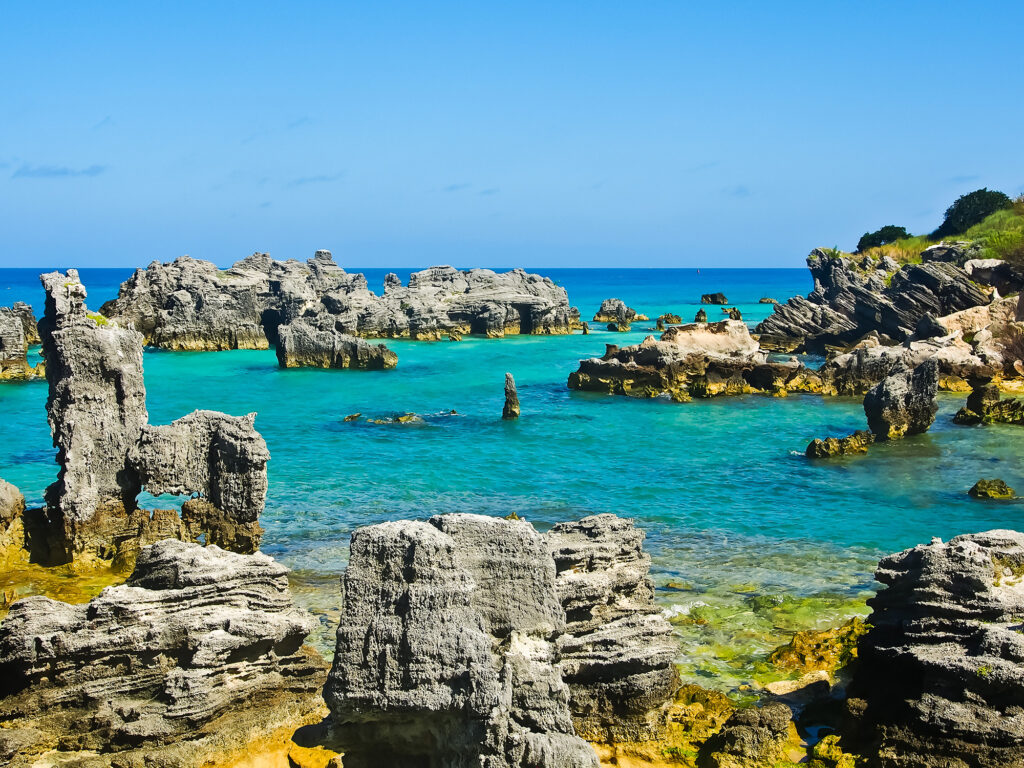
April typically marks the sunset of my “season” here in the Caribbean, when I must (albeit reluctantly) start thinking about heading back north, to cooler waters. For my float plan, that almost always means a stop in Bermuda. We are seldom alone.
The 2024 Atlantic Rally for Cruisers (ARC) Europe edition, with perhaps 40 boats, sets sail from Sint Maartin on May 11, arriving in Bermuda around May 17. They’ll rendezvous with yachts that departed from the US East Coast, who will join the Caribbean fleet for the voyage across the Atlantic to the Azores and European ports.
In June, the semi-annual Newport to Bermuda Race will arrive with approximately 50 boats. A bunch of private yachts will also make the voyage to Bermuda on their own, sailing from the Caribbean, the Chesapeake, New York or Newport. This 4- to 5-day voyage is a great shakedown for boats and crew preparing for more extended voyaging, and June is the month to go, before hurricane season takes hold.
Why Bermuda? The allures are endless. It’s a quaint, well-cared-for piece of Britain plunked down 650 miles off the US East Coast, for one. The entire island is much like a park. There’s no heavy traffic, no trash on the highways. Everyone’s lawn is mowed. The place is immaculate. It also has everything a yacht and crew might require.
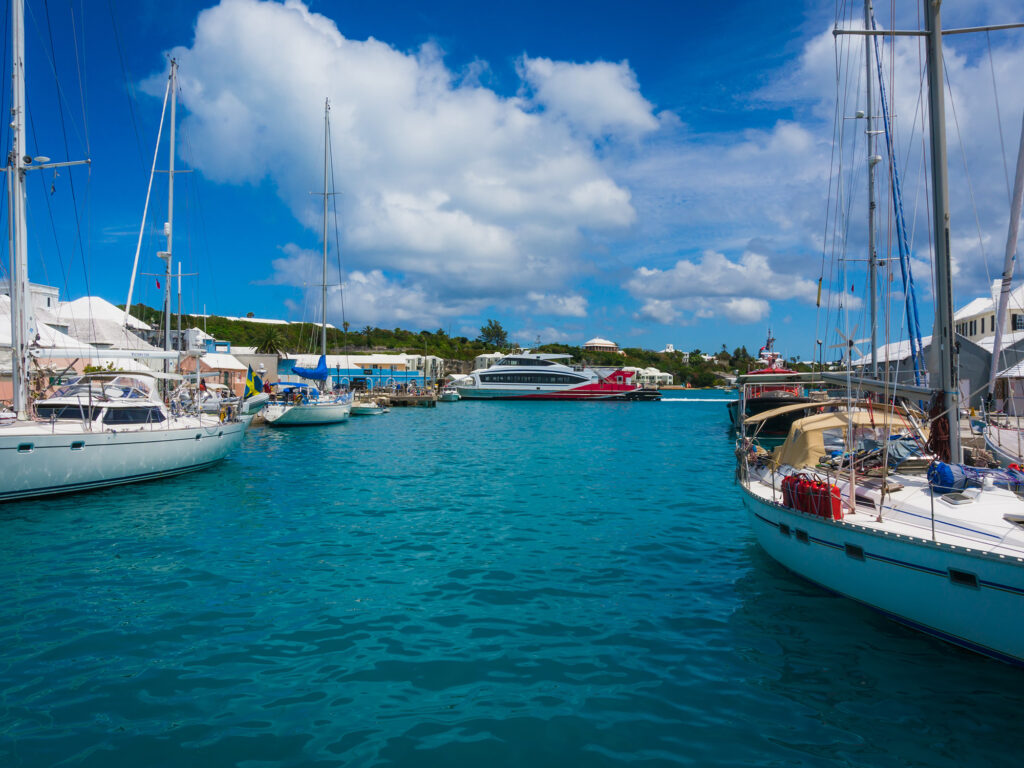
After any offshore run, there’s always something to be fixed, and Bermuda is rife with mechanics, sailmakers, and electronics and refrigeration technicians to lend a hand. There’s also a hardware store, fuel, water, provisions, numerous restaurants and the ubiquitous Dark and Stormy found at local hot spots like the legendary White Horse Tavern. US currency and credit cards are accepted. English is spoken, as Bermuda is a British Overseas Territory. Bermuda is well worth a few days of sightseeing, as evidenced by tourists flocking there for generations. Most important for cruisers, perhaps, is that Bermuda is a great spot to wait for favorable weather for crossing the Gulf Stream, heading east across the Atlantic, or steering your way south to the Caribbean.
Getting There
Sailing to Bermuda from the islands is a straight shot north, up “Route 65,” the 65th meridian. From Antigua to Bermuda is about 900 miles (typically 6 to 7 days). From there, Newport is 640 miles (another 5 days or so). To the Chesapeake is 600 miles (4 days). To the Azores, it’s 2000 miles (12 to 14 days)—and from there, another week to the Med or the UK.
Sailing will be brisk in the trades as you depart the islands. The trades will die out after a day or two, and you’ll have to motor for a few days through the Bermuda High, until the northeasterly or southwesterly breeze fills in. Once, on a delivery north to Annapolis, we motored for six days. Bring enough fuel for 100 hours of motoring. You’ll need to refuel when you get to Bermuda. More on that to come.
Before You Depart
Before you cast off for Bermuda, go online and download the Bermuda pre-arrival paperwork. There are three forms. Everybody is required to fill out a landing card. Every country has one. They’re available at gotobermuda.com/bermuda-arrival-card. You can fill out the card and submit it online. Skippers of private yachts planning to stop in Bermuda must complete the Bermuda Mariner’s Travel Authorization process online. This can be found at rccbermuda.bm/sailbda.aspx, which includes information and the two forms you’ll need to complete and submit, including the SailClear form for Customs and Immigration. The Pre-arrival Safety Form must be completed by the skipper before you enter Bermuda. You can do it online, or you can fill out the form verbally in the comfort of your nav station, talking to Bermuda Radio on VHF, while 20 miles out at sea.
The Approach
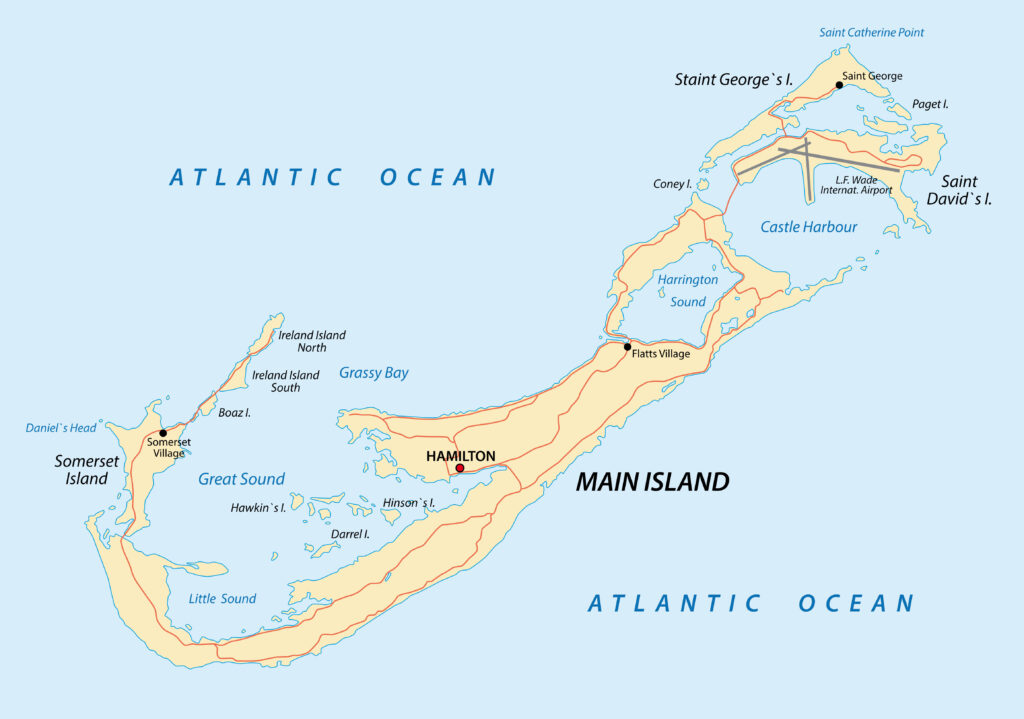
With your paperwork complete, you are now ready to approach Bermuda. The island is relatively flat, you’ll see a sweep of lights from the airport and lighthouses before you see land. The island is ringed with shallow reefs, so approach with caution. There’s only one way into the island, and that’s through Town Cut on the northeast corner of the island. You’ll be arriving in Saint George’s Harbor, where all yachts clear in.
When you are still 50 miles away from Bermuda, you may hear Bermuda Radio talking to other yachts on VHF 16. Bermuda Radio is the island’s maritime control center. Hail them when you are 20 miles out, or they will call you. They have you on AIS and radar, and they’ll want to know who you are and your intentions. (If you’ve completed your Yacht Safety Information online, they’ll have it. If you haven’t they will ask you to do so.) From there, they’ll direct you to enter Town Cut or wait for shipping to enter or exit. Once inside, they’ll either direct you to tie up at Ordnance Island to clear in, or to anchor in Power Hole, across from the village, and wait.
The entrance channel into St. George’s is well marked, but the day markers on the port side are unlit. At night, have someone with a flashlight on the port side to light up the reflectors. Town Cut itself is narrow, then opens up into a large, well-protected harbor. The village of St. George’s is ahead to starboard.
Clearing In
All yachts are required to tie up at Ordnance Island. There’s room for two boats at a time. The skipper takes passports and the ship’s papers to the office on the dock for processing. In my experience, the folks there are a friendly lot, and if your paperwork is in order and has been submitted online, the whole process takes less than 30 minutes. If you are a yacht just passing through, a 5-day transit permit is required at $5 per meter. Cruising permits, for longer stays, are $6.50 per meter. There are no other fees. (ARC Rally boats are exempt from these transit fees.)
While you’re there, request a transit fuel waiver form. This will authorize you to take on duty-free fuel.
Dockage and Anchoring
You can anchor most anywhere in the harbor with no charge. Holding is good, even in a blow. There’s a dinghy dock on the quay in the village opposite the Customs dock. Trash and spent engine oil receptacles are there as well.
For dockage, you’ll find a number of places to tie-up alongside in the village or at the St. George’s Dinghy & Sports Club. Space in town is assigned by St. George’s Marina through its website. April, May and June are on a first-come, first-served basis, but it is still a good idea for vessels to submit a request via the website.
Tying up in town puts you and your crew right in the middle of things. Stores, modern and clean bathrooms, banks, pubs and the bus service. The St. George’s Dinghy & Sports Club is located at the east end of the harbor, to the right, just as you enter St. George’s Harbor. There’s stern-to space for two dozen yachts at their concrete pier. Water may be available, but not fuel. The clubhouse has a bar with a happy hour, pool tables and a dart board, laundry, showers and bathrooms. It’s a fifteen-minute walk into the village. The club hosts the annual ARC Homebound Rally.
Bermuda Yacht Services (BYS) is your friend in Bermuda. BYS will arrange anything you need from repairs and sails to mechanical and rigging services. BYS is located in the St. George’s Yachtsmen’s Center on Ordnance Island. Free WiFi, bathrooms and showers, an inside lounge, and benches on the porch are available for use.
Refueling
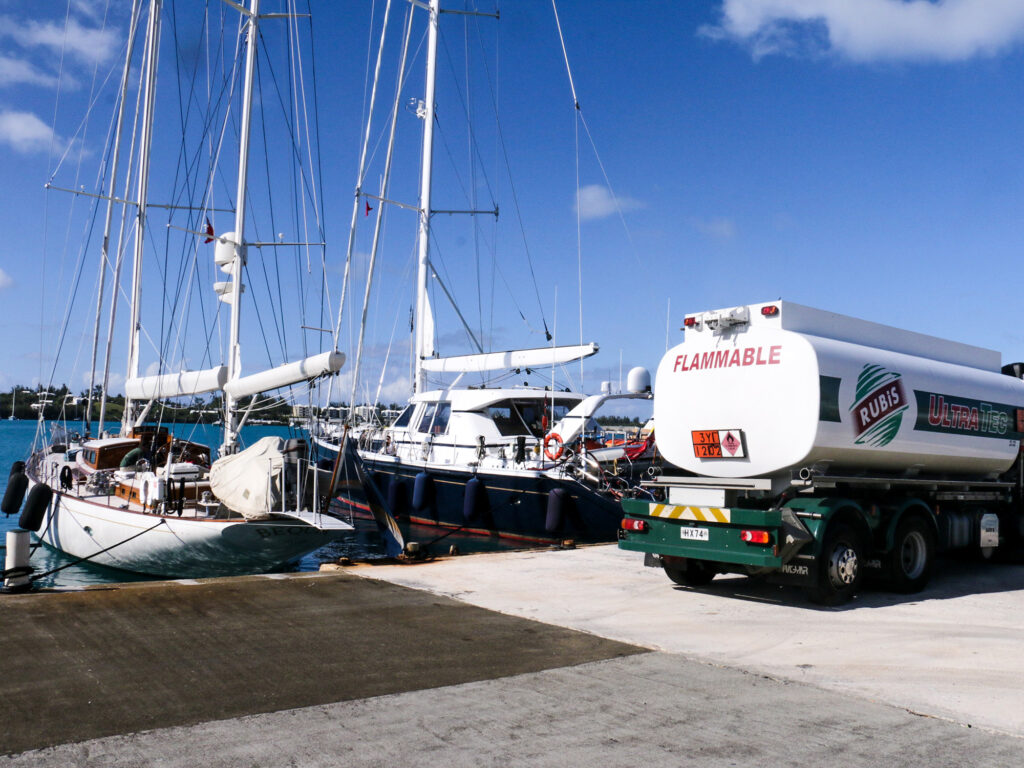
There is fuel in town at RUBiS Dowling’s Marine Service Station, but it’s not duty-free, so it can be pretty expensive. There are two options for taking on duty-free fuel. If there are enough boats needing fuel, Mark Sores at BYS will plan for a fuel truck to come down to the dockside. This gets done all at once, as one yacht after another comes alongside to top off. The price will be a couple of bucks cheaper than the non-duty free. (You’ll need that waiver you obtained at Customs.) If you are cruising alone and need fuel, you can get it duty-free at the big fuel depot at the Dockyard, at the other end of the island. From St. George’s, this will require a half-day’s motoring down, then all the way back. It’s a pleasant trip, and we’ve done it numerous times.
Out and About
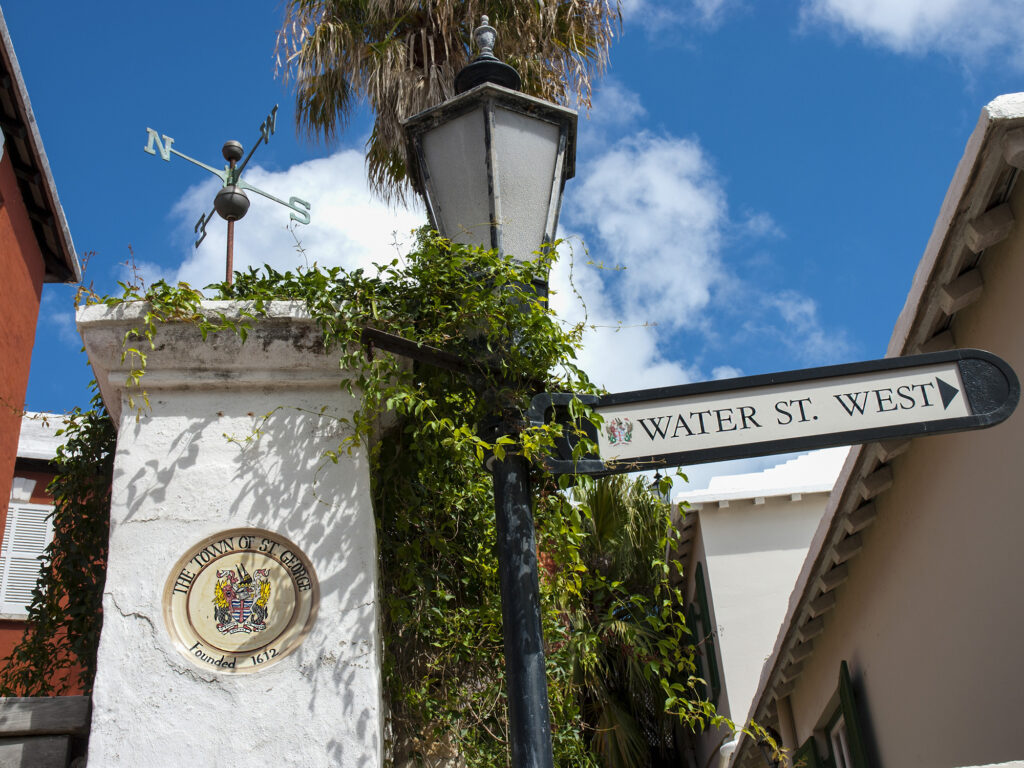
Bermuda’s name was given to the island by a Spanish captain, Juan de Bermúdez, who stumbled on the archipelago in 1505. The village of St. George’s was first settled in 1609, when an English ship, the Sea Venture, carrying colonists to Virginia, was swept onto Bermuda’s reefs during a storm. Shakespeare turned the event into his famous play, The Tempest. The crew and passengers managed to save much of their cargo, even enough lumber from the wrecked ship to build two, smaller ships, aboard which some colonists continued onward to Virginia. Two souls remained on the island.
The Virginia colony failed, but by 1612 a permanent settlement on Bermuda had been established. It’s the oldest English colony in the New World, eight years before Plymouth in Massachusetts. For a century or two, St. George’s served as Bermuda’s capital and its main port. During the American Revolutionary War, and the US Civil War, Bermuda’s “Forty Thieves,” the founding families, built their wealth on privateering, block-aid running and supplying ammunition to both sides.
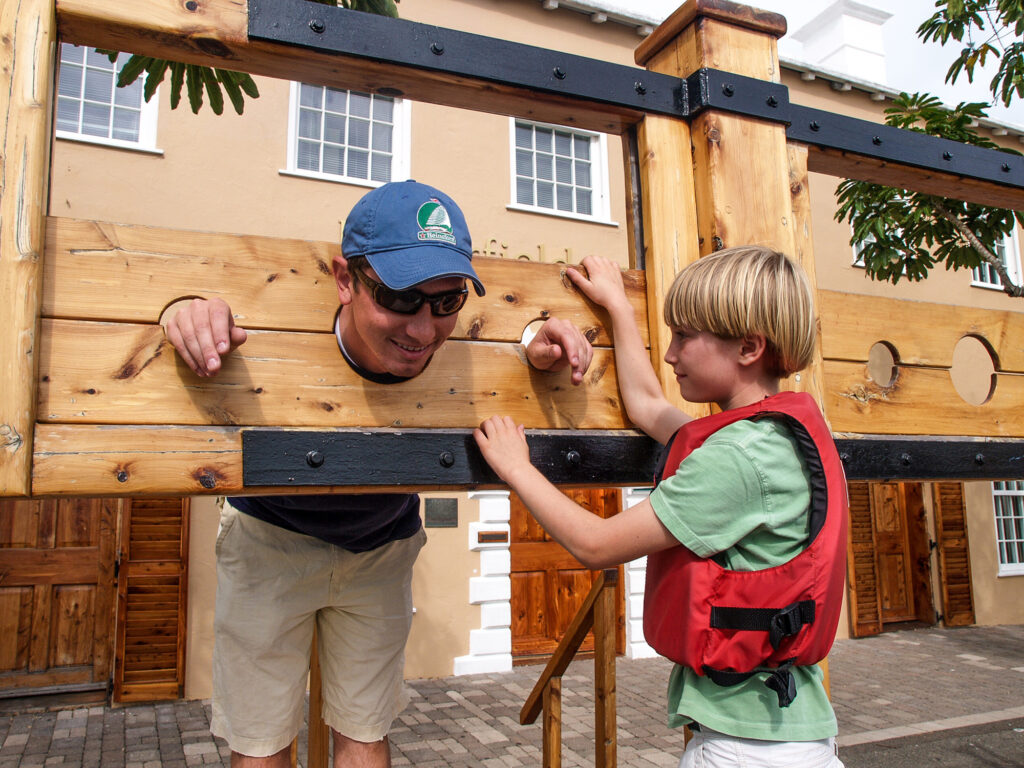
Even today, much of the village of St. George’s resembles an old village on the Cornish coast of England. Winding alleys of small, colorful cottages cover the hillside by the harbor, some dating back to the 1600s. There’s a very nice public restroom by the docks and a food store, Somers, a block away. They have most everything you’ll need for your next voyage, as well as a take-away buffet of hot and cold entries. A do-it-yourself laundromat is a short walk from the docks. A hardware store is on the main road, at the end of the commercial docks. The bus stops at the top of the hill. (Get your tickets at the nearby convenience store.) At the center of village, you’ll find banks, a post office, a stationery and drug store, clothing shops, and a handful of restaurants. Take the ten-minute stroll up and over the hill to Tobacco Bay Beach on the north side of the island, where a great pink-sand beach and snack bar await. Then, continue onward around Saint Catherine’s Point and back to the village. It’s about an hour’s walk.
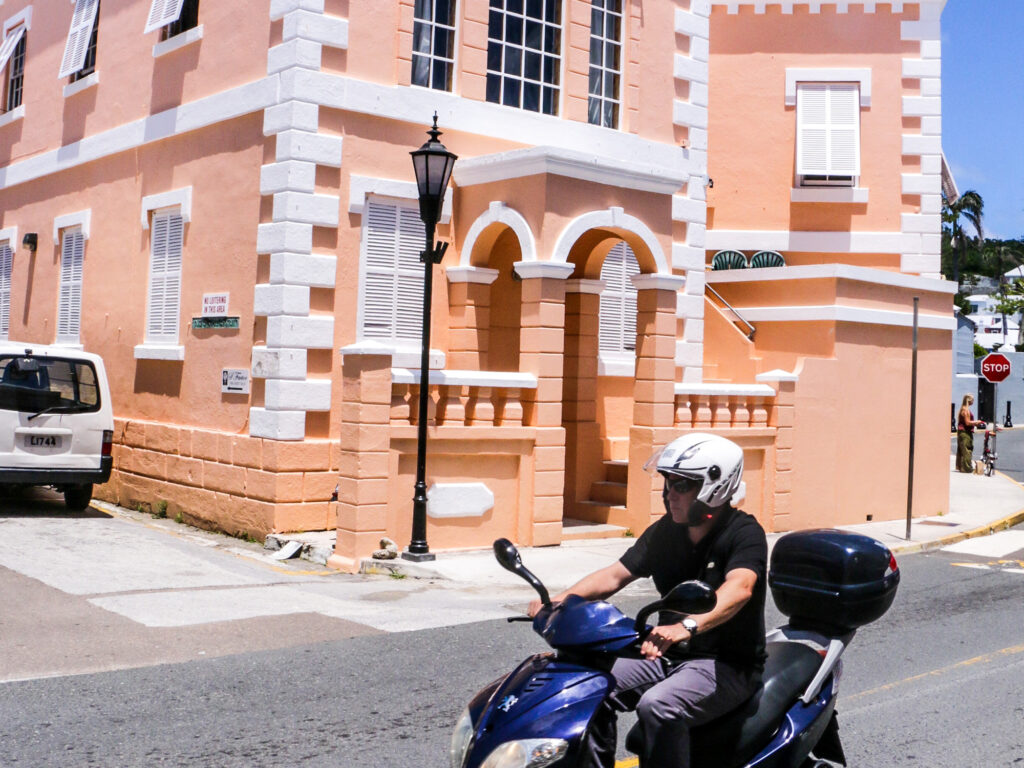
Due in part to tourism but mostly to the island’s recent rise as an international insurance center, today, Bermuda is among the world’s wealthiest islands and, therefore, is expensive. Hamilton, the island’s current capitol, looks a bit like Miami, with an eclectic blend of gleaming high-rise office complexes, 1920s resort hotels and quaint cottages. You can catch a ride into Hamilton on a very nice and efficient bus service from St. George’s. There are no car rentals, so mopeds are the way to go.
Clearing Out
This is the easy part. No need to bring the boat alongside. Simply leave it on the dock or at anchor and proceed to Customs and Immigrations on foot. Then, it’s onward toward the Caribbean, US Mainland or Europe and beyond.








